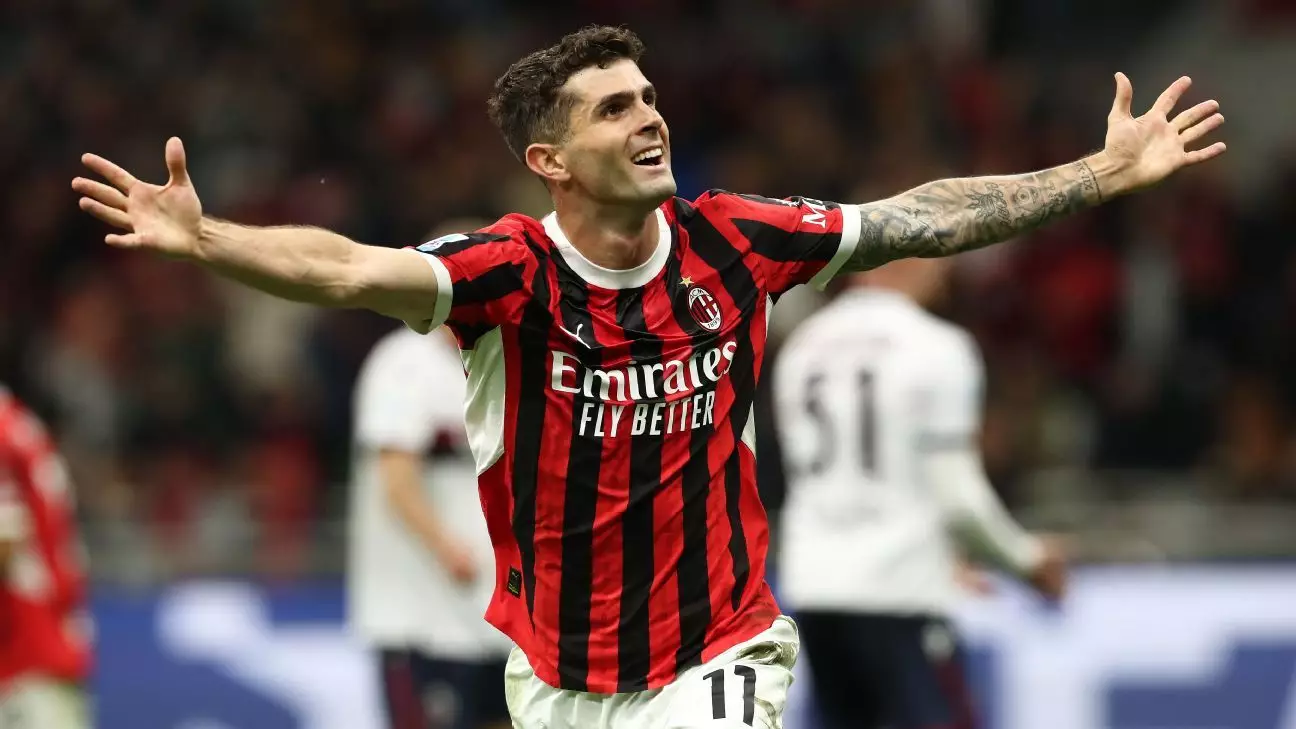In recent months, the Saudi Pro League has emerged as a daring contender for top talent, signaling a significant shift in the power dynamics of the beautiful game. Al Nassr’s pursuit of American star Christian Pulisic exemplifies this trend. The club’s interest in integrating a high-profile winger like Pulisic, alongside seasoned stars such as Cristiano Ronaldo and Sadio Mané, reflects a bold strategy to elevate the league’s global stature. This move isn’t merely about securing a talented player; it’s a calculated effort to assemble a competitive squad that can captivate international audiences, especially with the upcoming FIFA World Cup on home soil. Riyadh’s ambitions to include players like Aymeric Laporte further illustrate their intent to bolster both attack and defense, underscoring their desire to challenge traditional European dominance.
This influx of talent signifies more than just financial muscle—it’s about reshaping perceptions of football markets and influencing the sport’s economic landscape. While critics might argue about the sustainability of such investments, the truth is that these bold moves are forcing European giants to rethink their transfer strategies. The Saudi investment boom has the potential to catalyze a new era where emerging leagues not only attract stars but also develop their own footballing identities, making the sport more competitive and democratized on a global scale.
Contract Clashes and the Battle for Top Talent
Meanwhile, the tug-of-war for players persists among Europe’s elite clubs. Liverpool’s Ibrahima Konaté’s decision to reject a contract extension hints at underlying tensions and ambitions. Konaté, only 26 and nearing the peak of his career, reportedly turned down a long-term deal that would extend his stay until 2030. As rumors swirl linking him to Real Madrid, it highlights the club’s ongoing quest to reinforce their defensive line amid concerns over their current roster’s longevity.
This scenario epitomizes the broader pattern in which top clubs are willing to lose key players rather than meet exorbitant wage demands or release clauses. Real Madrid’s interest in Konaté and other high-profile defenders illustrates their strategic intent to adapt to a post-Modric era by reinforcing their backline with youthful, talented players. It also underscores the importance of agent negotiations and contractual leverage in modern football — where players have more power and options than ever before.
Furthermore, Bayern Munich’s aggressive pursuit of promising talents like Nick Woltemade and Luis Díaz showcases their intent to rebuild offensively without compromising on talent quality. The German giants’ refusal to accept Stuttgart’s €40 million offer for Woltemade reflects their valuation of young players and their readiness to hold firm for a lucrative deal. These negotiations highlight how clubs now operate in a broader marketplace, where valuation disputes often delay signings but also demonstrate the evolving hierarchy of player value.
Market Dynamics: Strategic Moves and Financial Heavyweights
The transfer window remains a battlefield of strategic moves, with clubs like Juventus, AC Milan, and Napoli all maneuvering for leverage. Juventus’s cautious approach to Dusan Vlahovic reflects a broader trend of clubs weighing whether to sell or retain star players based on financial and sporting considerations. Vlahovic’s desire to leave Juventus as a free agent indicates his ambition for immediate success, but the club’s reluctance to facilitate an early exit at a lower fee reveals their tactical stance.
Meanwhile, teams like AC Milan are patiently observing how the Vlahovic situation unfolds to inform their own transfer plans. The potential signing of Luka Modrić, transitioning from Real Madrid to AC Milan, exemplifies the importance of experience and tactical intelligence—veterans like Modrić bring leadership and a winning mentality, which are vital for clubs seeking continental success.
Additionally, clubs like Bournemouth and Strasbourg are executing shrewd deals, with Bournemouth’s agreement to sign Chelsea’s Djordje Petrovic for £25 million exemplifying financial pragmatism. On the other hand, Barcelona’s intense interest in Nicolas Jackson underscores their ongoing quest to bolster their attacking options amidst high transfer demands.
The quest for talent spans continents — from Napoli’s negotiations for Udinese’s Lorenzo Lucca to Lille’s Mátíás Fernández-Pardo attracting European interest — revealing how strategic scouting and negotiation are fundamental in today’s football economy. These interactions create a complex web where supply and demand, valuation, and timing influence the transfer market’s ebb and flow.
Emerging Talents and Future Promises
In the midst of mega-deals and strategic maneuvering, the spotlight also shines on young talents poised to redefine their careers. Malik Tillman’s transfer to Bayer Leverkusen exemplifies the importance of nurturing emerging players. While the spotlight often falls on headline signings, clubs are increasingly investing in youth development to ensure sustained success. Such moves reflect a broader shift toward long-term planning, where promising talents are seen as crucial assets for both sporting progress and financial stability.
The interest in players like Johan Bakayoko, Neil El Aynaoui, and others signals a willingness among clubs to bet on potential, often seeking hidden gems that can multiply their value with proper development. These decisions underscore a conviction that the future belongs to those who invest early and cultivate young excellence.
Overall, the current transfer landscape reveals a sport in flux—where billion-dollar investments mingle with prudent talent development, and where traditional powerhouses face fresh competition from ambitious new players on the global stage. As clubs recalibrate their strategies amidst evolving economic realities, one thing remains clear: football is more dynamic, unpredictable, and exciting than ever before.

